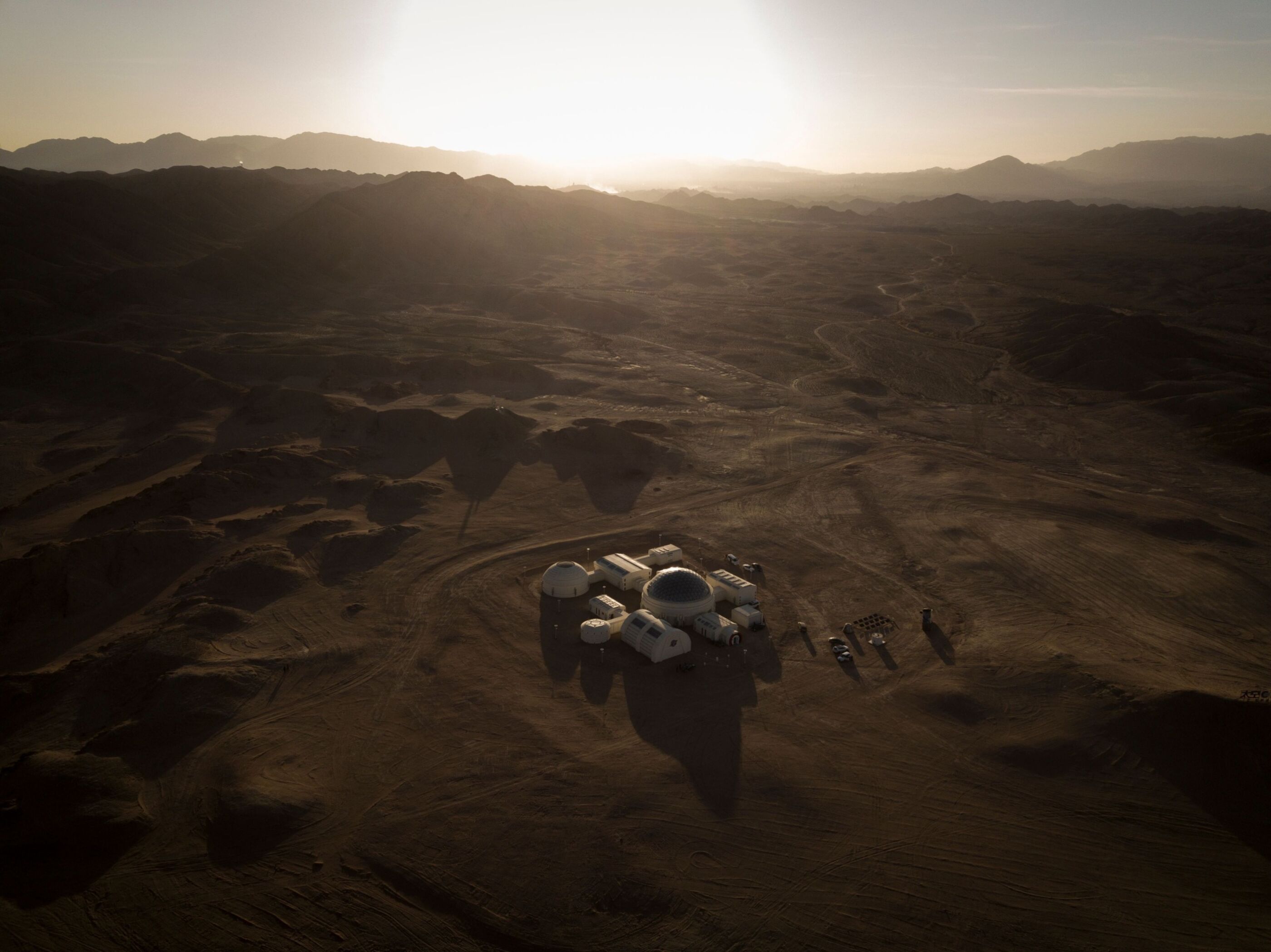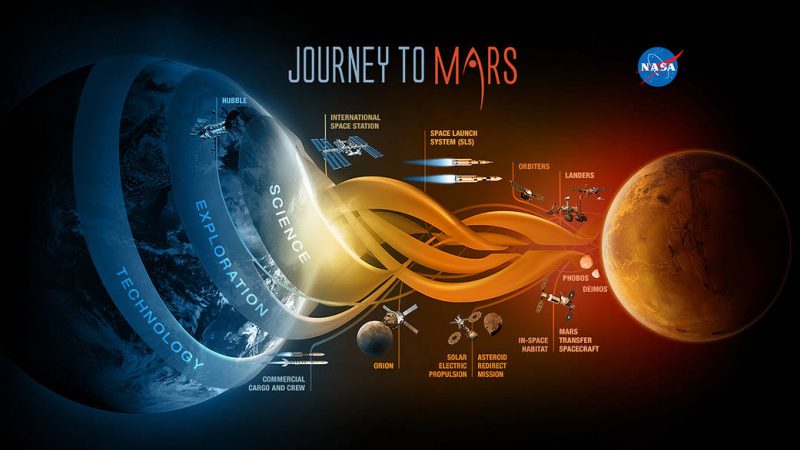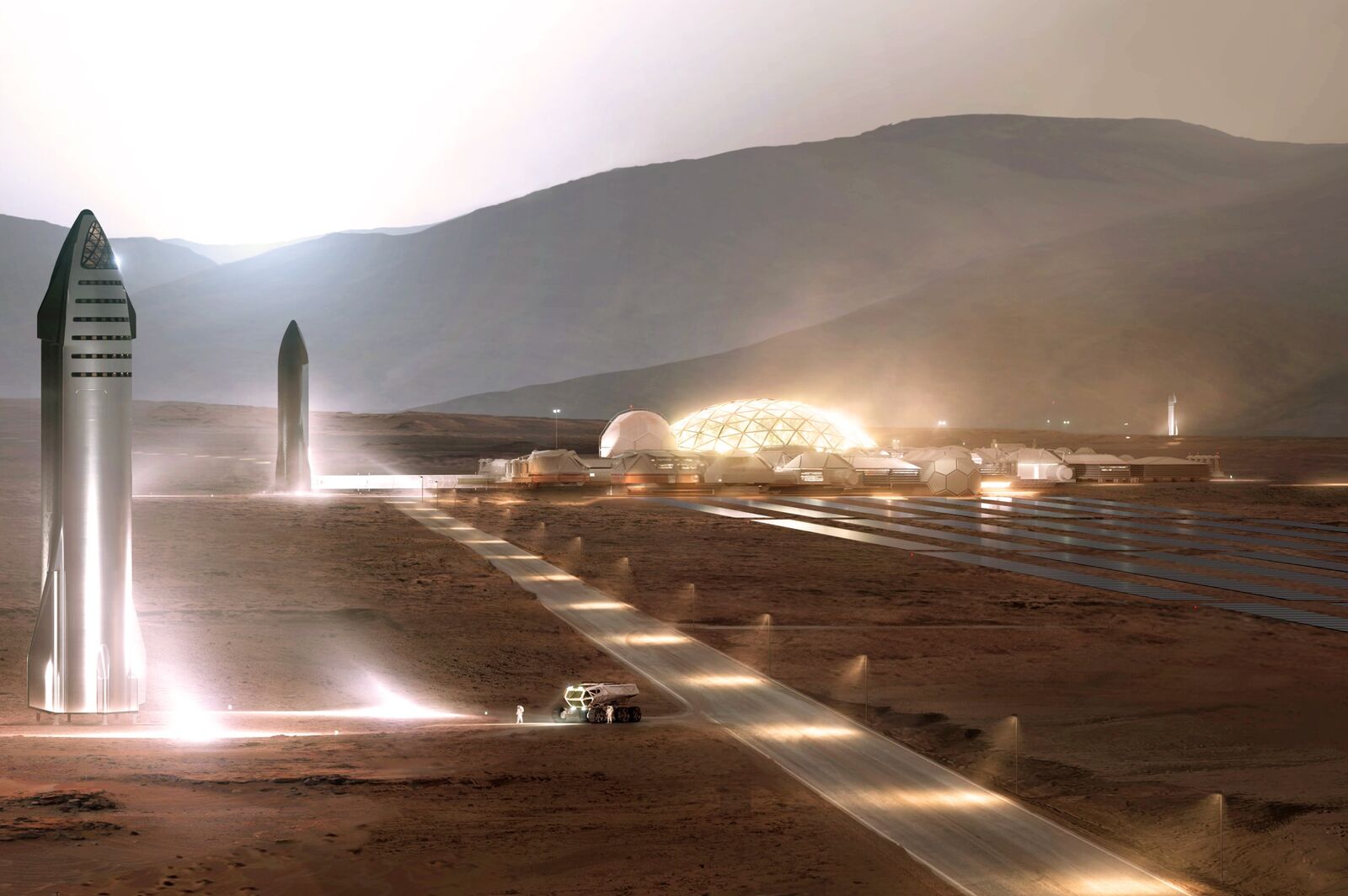Oh, Those Inconvenient Details
 |
| “Mars Base 1” is a Mars simulation center in the Gobi desert. Photographer: Wang Zhao/AFP via Getty Images |
"[With lunar exploration], there's always the prospect of rescue or provisioning or supply from Earth or from a midway space station.""That's not going to be the case for Mars."Alice Gorman, associate professor, Flinders University, Adelaide, member advisory council Space Industry Association of Australia"It's a very gruesome way to die [hit by radiation from unpredictable solar flares].""We don't have established capacity to observe the Sun from different angles for tracking solar storms."Lewis Dartnell, professor, astrobiology specialist, Department of Life Sciences, University of Westminster, London"'During a massive dust storm], it's almost like midnight on the surface of Mars for two months.""If you are there with solar panels for power, you very likely don't survive.""You don't have enough energy to keep things warm enough."Nilton Renno, professor, astrobiology research, University of Michigan"Today it's definitely a place where we can't live.""But as we develop science and technologies, the answer might be different in fifty to a hundred years from now."Adnan AlRais, Mars 2117 program manager, Mohammed Bin Rashid Space Center, United Arab Emirates

There are future plans, ambitious and determined from various sources, to have humans visit Mars and perform preparatory work to form a colony on the Red Planet. NASA plans to send astronauts at some point in the 2030s to Mars. China stated that sending humans to Mars is a long-term goal it holds. The United Arab Emirates promotes a 100-year plan for the creation of a colony; for a starter it has a spacecraft orbiting Mars. For anyone interested in the here-and-now in experiencing what it might feel like to land on the planet, there is a site in the Gobi Desert simulating being there.
And then there's Elon Musk, that forward-looking billionaire, founder of Space Exploration Technologies whose plan is to send humans to Mars within the decade, confident that a crewed mission could occur in 2026. There are risks, he acknowledges, having responded in the face of warning by many scientists that too many unanswered questions confront deep-space travel. "Honestly", remarked the tycoon, "a bunch of people probably will die at the beginning."
It took but a few days for the Apollo astronauts to fly to the moon. Mars, on the other hand, would require between six to nine months for arrival from Earth, the distance between Mars and our planet varying between 35 million miles and 249 million miles taking into account their elliptical orbits, with a small window potentiating when the two would be ideally aligned for space travel; tricky logistics.
 |
| International Space Station astronauts have been helping to pave the wave for future manned Mars missions. Image via NASA. |
Exposure during a long flight to one of space travel's terrors, solar flares would await any humans who opted for the experience. Solar flares represent immensely violent hydrogen explosions capable of obliterating everything in their near vicinity, they represent the most powerful explosives in the solar system. A single flare representing the equivalent of 100 million hydrogen bombs. While the Earth's magnetic field can shield orbiting astronauts, a deep-space traveller hit by fierce radiation couldn't survive beyond a few days.
On a multi-month trip to Mars, conceivably shields could be made of water tanks onboard the spacecraft were they to be properly positioned, so in the event of a flare, the spacecraft's version of a panic room surrounded by water tanks could offer a safe retreat to travellers. A bit of a stickler is detecting activity on the Sun, particularly on the side facing away from Earth. So there's the problem of radiation where Mars's thinner atmosphere without a global magnetic shield sees humans risk exposure to solar and cosmic radiation.
 |
| NASA is developing the capabilities needed to send humans to an asteroid
by 2025 and Mars in the 2030s – goals outlined in the bipartisan NASA
Authorization Act of 2010 and in the U.S. National Space Policy vis NASA |
Then, there's the problem of massive storms that can produce dust clouds to block out the sun, since the Mars surface is itself largely comprised of dust. Humans could conceivably use the dust for protection by lining shelters with sandbags filled with Martian soil to block out radiation, offers associate professor Joseph Michalski, who studies the habitability of Mars at the University of Hong Kong. Cave-dwelling could also be a mode of shelter by exploiting some of Mars's lava tubes, large caverns left over from space antiquity when Mars experienced volcanic activity.
 There are experiments taking place in growing algae in low-nutrient environments, in greenhouses as a source of food and the production of oxygen. Survival must include a water source. Mars does contain some sub-surface ice that could be transformed to water. For that purpose the use of radar to map the distribution of sub-surface ice would be invaluable to a future Mars mission. "Once you know where the ice is, those are locations where you might send humans", noted Victoria Hamilton, planetary geologist at the Southwest Research Institute, Boulder, Colorado.
There are experiments taking place in growing algae in low-nutrient environments, in greenhouses as a source of food and the production of oxygen. Survival must include a water source. Mars does contain some sub-surface ice that could be transformed to water. For that purpose the use of radar to map the distribution of sub-surface ice would be invaluable to a future Mars mission. "Once you know where the ice is, those are locations where you might send humans", noted Victoria Hamilton, planetary geologist at the Southwest Research Institute, Boulder, Colorado.How many people, at a guess, would opt for a one-way trip to Mars, disinterested in returning to Earth? Once on Mars it would take a rocket to return to Earth, and where the fuel would come from to power the spacecraft for a return journey through space remains a huge technological puzzle. "It's not the case that we would bring the rocket fuel with us. It's just too heavy", pointed out Michalski. He offers a potential solution of producing fuel by electrically separating water from sub-surface ice and hydrated rocks, combining the hydrogen and oxygen for rocket fuel.
 |
| An artist’s rendering of SpaceX’s Starship. Source: SpaceX |
Labels: China, Colonizing Mars, NASA, Space Exploration, Space X, United Arab Emirates

0 Comments:
Post a Comment
<< Home